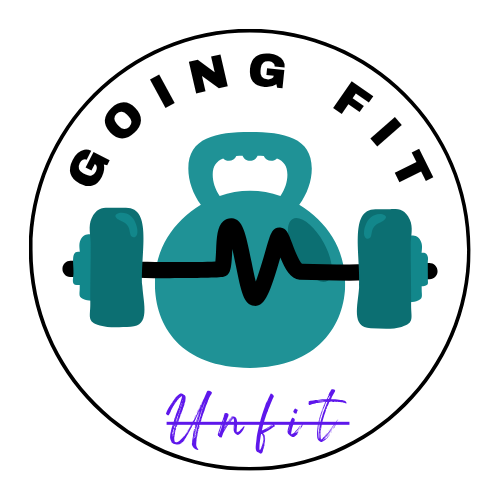Ever wonder why your fitness routine doesn’t seem to be yielding the results you hoped for? You’re not alone. Many fitness enthusiasts face this perplexing issue, often leading to frustration and a loss of motivation. But before you throw in the towel, it’s crucial to understand that several underlying factors could be at play here.
In this article, we’re diving into eight common reasons your body might not be responding to your workouts and, more importantly, offering practical solutions to help you break through those plateaus. So, let’s unravel these mysteries and get you back on the path to achieving your fitness goals!
Inadequate Recovery Time for Your Fitness Routine
Recovery time is one of the most overlooked aspects of a successful fitness routine. It’s easy to think that more workouts mean faster results, but the truth is that your body needs time to rest and repair. Overtraining can lead to fatigue, injury, and even a plateau in progress.
So, how do you balance it? First, ensure you’re getting enough sleep — during those naps, your body does most of its recovery work.
Also, intersperse your intense workout days with lighter activities or complete rest. Remember, activities like yoga, stretching, or a leisurely walk can benefit your body’s recovery process.
Unbalanced Diet
Your diet plays a pivotal role in your fitness journey, acting as the fuel that powers your workouts. An unbalanced diet can lead to lackluster results, no matter how hard you hit the gym.
The key is to find a nutritional balance that complements your fitness regime. This means incorporating a mix of proteins for muscle repair, carbohydrates for energy, and fats for overall health, along with vitamins and minerals.
Don’t forget hydration! Start by assessing your dietary needs based on your workout intensity and goals, and consider consulting a nutritionist to tailor a plan that’s right for you.
Consistency and Routine
Consistency is the cornerstone of any successful fitness plan. Irregular workout schedules can lead to sporadic results and may even cause demotivation. You must develop a routine you can stick to to see tangible progress.
Start by setting realistic workout frequencies that fit into your lifestyle, ensuring they’re something you can maintain long-term. Regularity in your exercise not only helps build endurance and strength but also forms a habit.
Hormonal Imbalances and TRT
Hormonal imbalances can silently sabotage your fitness efforts, particularly if testosterone levels are low. This hormone is crucial in building muscle mass, burning fat, and sustaining energy levels. You might find it harder to gain muscle or lose weight despite rigorous workouts when levels are imbalanced.
Testosterone Replacement Therapy (TRT) can be a viable solution for those diagnosed with hormonal imbalances. TRT solutions help restore testosterone levels to their optimal range, potentially enhancing workout effectiveness and overall well-being. It’s important to consult with a healthcare professional to understand if TRT suits your fitness and health needs.
Lack of Variation in Workouts
Sticking to the same workout routine can lead to a fitness plateau, where your body no longer responds as it used to. To keep challenging your body and stimulate progress, it’s essential to introduce variation into your workouts. This could mean alternating between cardiovascular exercises, strength training, flexibility workouts, and high-intensity interval training (HIIT).
Each type of exercise targets different aspects of fitness and prevents your body from becoming too accustomed to a specific routine.
Inadequate Hydration and Nutrition
A key element often underestimated in fitness is the role of hydration and nutrition. Your body’s performance during workouts is significantly influenced by what and how much you drink and eat. Staying hydrated is crucial for maintaining energy levels, regulating body temperature, and facilitating muscle recovery. Aim to drink water consistently throughout the day, not just during workouts.
Nutrition-wise, fueling up on a balanced mix of proteins, carbs, and healthy fats ensures your body has the necessary energy and resources to perform and recover. Pre- and post-workout meals are particularly important for maximizing your exercise benefits and recovery.
Overlooking Strength Training in Your Fitness Routine
While cardio exercises are often the go-to for fitness enthusiasts, overlooking strength training can be a missed opportunity for holistic fitness development. Strength training is essential for building muscle mass, improving bone density, and boosting metabolism. It complements cardio workouts by enhancing endurance and overall physical strength, making your body more efficient in other forms of exercise.
Moreover, it aids in fat loss, as increased muscle mass boosts calorie burn even at rest. Incorporating strength training a few times a week can balance your fitness routine, ensuring you achieve well-rounded results in terms of strength, flexibility, and endurance.
Unrealistic Goals and Expectations
Setting unrealistic fitness goals can lead to disappointment and demotivation. For example, do not aim to run five miles a day if you don’t have a regular running routine already set in place. You’ll only set yourself up for failure.
It’s important to establish achievable targets that challenge you without overwhelming you. Start with small, measurable goals and gradually increase the difficulty.
Final Thoughts
Navigating the complexities of a fitness routine requires understanding the diverse factors that influence your progress. From diet and recovery to workout variety and realistic goal-setting, each element plays a crucial role. By addressing these areas, you can enhance your fitness journey and achieve more effective and satisfying results.












Thanks for this amazingly helpful post.
Thank you for sharing
finding the right routine is everything…
thanks for sharing, I didn’t know about some of these